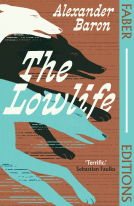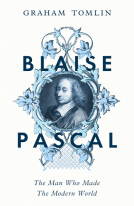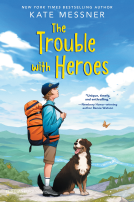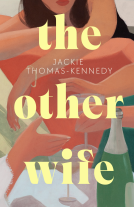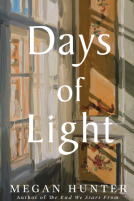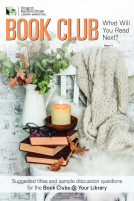
Unvarnished
Autobiographical Sketches by Emily Carr
by Emily Carr
This title was previously available on NetGalley and is now archived.
Send NetGalley books directly to your Kindle or Kindle app
1
To read on a Kindle or Kindle app, please add kindle@netgalley.com as an approved email address to receive files in your Amazon account. Click here for step-by-step instructions.
2
Also find your Kindle email address within your Amazon account, and enter it here.
Pub Date Dec 31 2021 | Archive Date Feb 28 2022
Royal BC Museum | The Royal British Columbia Museum
Description
Culled from the hand-written pages in old-fashioned scribblers and almost-forgotten typescripts amid drafts for her published stories, Unvarnished features among the last unpublished and highly personal writings of the iconic Canadian author and artist Emily Carr.
This highly readable manuscript—edited by Royal BC Museum curator emerita Kathryn Bridge and illustrated with sketches and photographs from the BC Archives—spans nearly four decades, from 1899 to 1944. In an almost stream-of-consciousness outpouring of stories, Carr chronicles her early years as an art student in England, her life-altering sojourn in France and subsequent travels to Indigenous villages along the coast, her encounters with the Group of Seven, conversations with artist Lawren Harris, and her sketching trips in the “Elephant” caravan in the company of a quirky menagerie. Also included are stories written in hospital recovering from a stroke, a particularly vulnerable time in her life.
Emily Carr’s books have remained in nearly continuous print since the 1940s. Unvarnished is a fresh addition to her enduring oeuvre, to be enjoyed as a complement to her other writings or as a jewel in its own right.
Available Editions
| EDITION | Other Format |
| ISBN | 9780772679642 |
| PRICE | $19.95 (USD) |
| PAGES | 144 |
Featured Reviews
I knew a little about Emily Carr, having visited Victoria several times and seen some of her work in the museum there. It was fascinating to read her own accounts of her struggles to become an artist and to find her way in a world that didn't seem to accept her. The effort it must have taken her to keep going, despite all her hardships and the lack of understanding from her family and society in general until much later in her life, shows that art was, as she puts it, close to religion for her. She is funny and sharp and has a great way of describing her experiences in such a way that you feel that you know how she would have spoken if you had met her. Her paintings are magnificent and I am drawn to discover more about her after reading this book.
I adore both Emily Carr and unpublished notebooks (what can I say, I’m nosy!) so this was an unexpected treat. I loved going through these pages and getting a sense of the artistic process through the development of her pieces. Really insightful book!
“in the sanatorium we lived by rule disburdened of all responsibility even of the care of our own bodies. As near as possible you became a vegetable sun rain & snow fell upon you.”
4 stars
Going in I didn’t have a lot of knowledge about Emily Carr. I very much enjoyed all the sketches and some of the poems. I loved how she captured people and some of her word choices. Readers should realize this is a very rough notebook, even with some editing, with long run on sentences, ampersands even in dialogue, numbers written numerically, etc. I was given kindle format which really is sort of pointless for this particular book. If you are at all interested in a glimpse into this complicated, messy, creative woman-get a hard copy! Pictures are impossible to really see, and it is formatted to sometimes break off mid word, continuing several pages later after drawings and pictures with the other half of the word.
Thank you to the author, editor, publisher, and NetGalley for an advanced copy in exchange for an honest review.
I received a free prelease copy of this ARC in exchange for an honest review.
Emily Carr 1871 - 1945 A famous Canadian artist with the largest archive in British Columbia is now documented in Unvarnished, basically a cache of documents concerning her photos, sketches, and writings created by herself and others, it's more powerful than any biography. it's like opening a window into her style and brain looking through this book. An icon of Canadian history working her way up into world history.
Unvarnished is a great book on the writings of Emily Carr put together from information combed through at the British Columbia archives. With a new perspective on Carr’s hand written notes and sketches, this comprehensive book will give the new reader of Emily Carr’s life and for those who know her, some new perspectives on her journals and personal life.
My first exposure to Emily has been through her writings so Unvarnished was the perfect read to give me further insight into what Carr was thinking and doing during that time. Different from many other women’s lives at the beginning of the 20th’ century, Emily Carr’s biography is unique in perspective and experience. An unmarried artist who spent a lifetime studying and expressing what she saw and experienced, we learn how she struggled to make ends meet, how she met the Group of Seven, her travels to remote Indigenous communities in British Columbia to London and Paris to study art and her failing health in mid-life when she took up writing.
The best thing about this book is that we get a glimpse of what it was like to be Emily Carr through her own words. What it was life to be in England when the Queen died, what it was like traveling across the ocean and especially what it was like to be one of the first Canadians in a British world. Unvarnished is how Emily described herself, but she’s also funny, honest, independent and fascinating to read about. The personal pictures and her artwork and sketches really make you realize that beyond her writings she was also a great painter. What a fascinating person to read about, the people who put this book together did a great job. This is a great read for new and old Emily Carr fans as well as anyone interested in early 20th century life. I highly recommend.
A collection of original documents from the Royal B.C. Museum, Unvarnished by Emily Carr consists of an introduction, including some of her poetry and "funny book" pages, followed by text and sketches from her journals principally from the 1930's, and various stories.
The introduction kindly warns that the journal entries are presented with the spelling and grammatical errors intact, with sentences sometimes streaming together, as this is very much what Carr termed her "unvarnished" work that had not been polished for publication. Also present, and also mentioned in the introduction, are some troubling elements such as her attempts to replicate the accent of a Chinese man speaking in English.
The journals, written when she was in her sixties but covering her earlier life as well, include Carr's travels to study painting in England and France and her relationship with the artistic community in Canada. Her time embracing living in a caravan is particularly interesting. And, as are the brief stories that follow, her journals do focus quite a bit on the animals in her life.
Unvarnished is sure to delight devotees of Emily Carr. For me, it is both interesting and a bit of nostalgia, having discovered her through a spontaneous visits to the Royal B.C. Museum and the Emily Carr House in a long ago trip to Victoria, B.C. during which I decided that a copy of her The Book of Small would be an appropriate souvenir.
This review refers to a digital galley that I voluntarily read via NetGalley, courtesy of the publisher. A positive review was not required and all opinions expressed are my own.
I love Emily Carr’s paintings. Whenever I get the chance to visit Victoria, BC, I try to see the Art Gallery of Victoria to view their collection of her works. I have, however, never read any of her prose.
Unvarnished me is a phrase Carr used to “describe herself, her personal writings, private papers, and objects she deemed her honest self” (Kathryn Bridge).
Unvarnished is a non-threatening yet intense immersion into Carr’s writings, writings that range from postcards she’s written to friends and family, personal journals, and her short stories. In addition, the text includes visuals of Emily Carr’s journals, artwork, and photographs of the artist herself.
Kathryn Bridge does an impressive job weaving together this collection, creating an intimate portrait of one of Canada’s most celebrated artists.
 Mandy J, Reviewer
Mandy J, Reviewer
An absolutely delightful book, comprising Emily Carr’s sketches, art, photographs, stories, diary extracts, notes, all expertly edited by curator at the Royal BC Museum Kathryn Bridge. Carr’s unmediated and “unvarnished” writings and pictures give the reader a real insight into her full and varied life, experiences and thoughts.
 Rhonda L, Reviewer
Rhonda L, Reviewer
I was drawn (no pun intended) to Unvarnished by Emily Carr by her drawings. I was not disappointed. I enjoyed them. I never heard of Emily Carr before this book. She was Canadian and quite the paradox. Interesting read - don’t skip the introduction.
Reading this title was quite captivating. Enjoyable title. Hope we can soon publish our final thoughts on our website.
Kathryn Bridge ed. Unvarnished by Emily Carr Royal BC Museum 2021.
Thank you NetGalley for providing me with this uncorrected proof in exchange for an honest review.
Kathryn Bridge has brought Emily Carr’s delightful drawings and prose to a wider audience than the papers from which they have been culled would have been able to do. Bridge has been meticulous in drawing attention to the significance of the works, in explaining the background to some of the awkwardness in the prose and providing an important context. She also provides an excellent explanation for her approach to transcribing the work. As an academic approach to her book, none of this can be faulted.
However, there is a distinct difference between the biographical and explanatory material and the beautiful and deceptive simplicity of Emily Carr’s work. The interwoven nature of Bridge’s explanatory and bridging material between examples of Carr’s writing is valuable and provides a biography that relies not only on Carr’s work, but knowledge of her circumstances and the context. However, the disadvantage of this approach is that it unfortunately highlights the difference between the deftness of Carr’s prose and illustrations and Bridge’s information. While the academic standard Bridge has achieved is exemplary, I feel the book would have benefitted from a lighter touch and more engaging presentation of the biographical material.
The academic introductory and explanatory matter includes a list of primary sources, such as newspapers and archival records, A chronology of Emily Carr’s life and writings, and a bibliography as well as the preface, introduction and note on the transcription. Illustrations are captioned and the dates on which they were produced contribute to understanding the progress of this fascinating writer and artist.
And there is no doubt that Emily Carr is fascinating. From her early unpolished work to her award-winning books her story unfolds through well curated text and illustrations. Since she died in 1945, Bridge writes, the interest in her work has remained firm. She is described as a Canadian national treasure, and it is with a sense of shame I acknowledge that until reading this book I did not know her work. Despite the concerns I raised earlier in this review, I am grateful that for me her work has not remained undiscovered.



